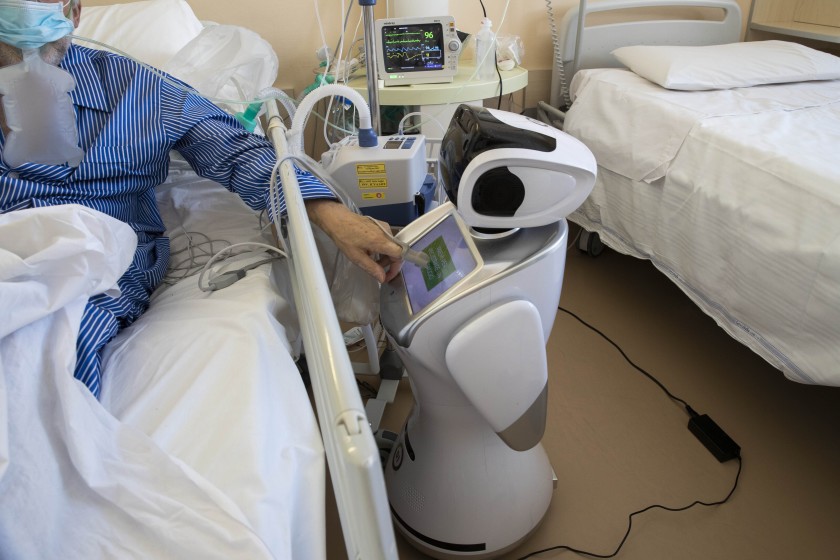They disinfect hospital corridors with ultraviolet light to eliminate traces of the novel coronavirus. They help nurses manage routine tasks so they can spend more time with sick patients. They deliver meals to people heeding public health orders to stay at home and help police deliver warnings to those who aren’t.
As medical researchers rush to develop treatments and vaccines to deploy against the coronavirus, scientists and engineers are working on another type of weapon that could play an instrumental role in fighting the COVID-19 pandemic: robots.
“As epidemics escalate, the potential roles of robotics are becoming increasingly clear,” an international group of researchers wrote last month in the journal Science Robotics.
And there’s much more robots could do if engineers concentrated their efforts on the greatest needs, researchers said.
Here’s a closer look at how robots could play a larger role in the pandemic.
Robots on the front lines
A big concerns in any infectious disease outbreak is minimizing risk to the doctors, nurses and other healthcare workers who are in direct contact with sick patients. If those caregivers also become ill, it means less treatment for patients.
“When health workers are at risk, we are all at risk,” said Tedros Adhanom Ghebreyesus, director-general of the World Health Organization.
Robots could take healthcare workers’ place in certain circumstances, such as administering tests to see whether people have been infected with the coronavirus, Yang said. That’s crucial because people who seem to be perfectly healthy may in fact be infected and could spread the disease to others.
It helps that robots don’t get sick, and — unless they run out of power — they don’t need to sleep.
Russell Taylor, a roboticist at Johns Hopkins University whose work led to the development of one of the first surgical robots, said medical robots could be useful in intensive care units where risk of contamination is a major worry.
For example, a health worker needing to tend to an Ebola patient might need to put on heavy personal protective equipment before entering a high-risk area, then remove and discard that equipment during the decontamination process at the end of her shift. That’s time-consuming, tiring and potentially dangerous.
Sending a remotely operated robot to interact with the patient instead could dramatically reduce that risk, Taylor said. After all, robots are immune to biological pathogens and can be efficiently disinfected with harsh chemicals. Not so for human beings.
